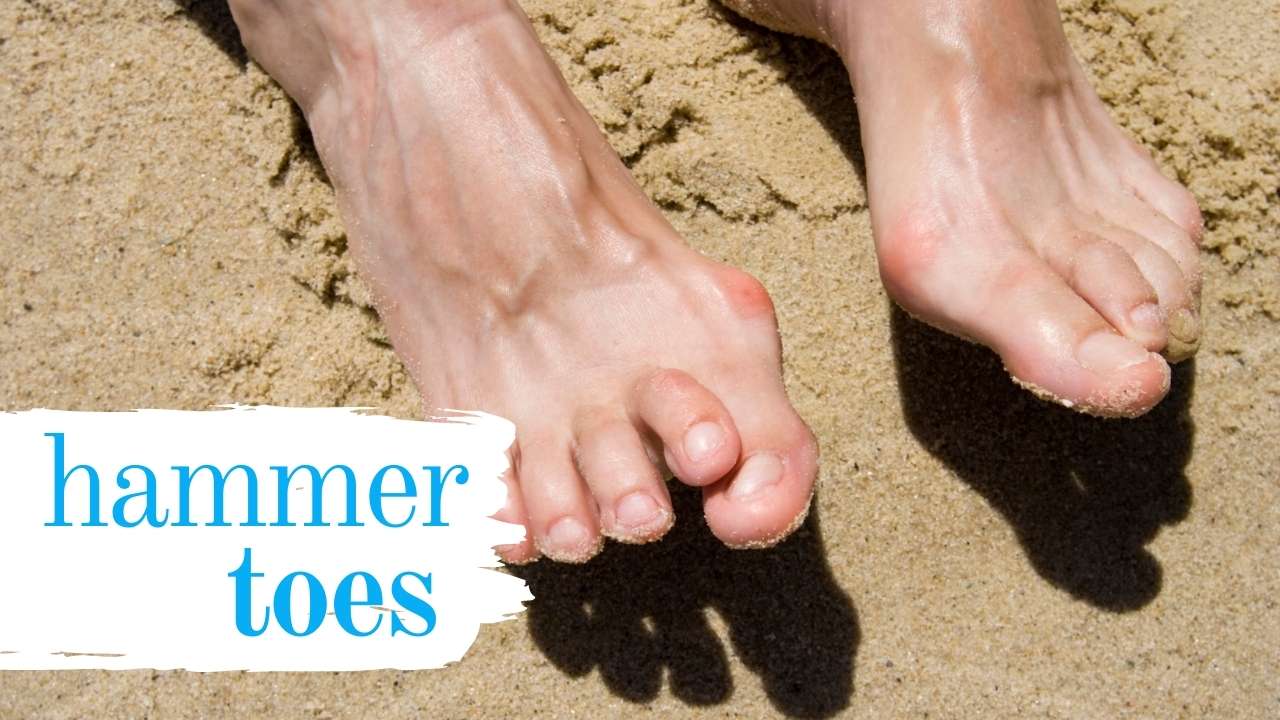Unless you have hit your toe while pounding in a nail, you may wonder what hammers and toes have to do with each other. Like many other conditions, the name of this one is derived from how it looks. Normal toes lay straight and flat on the floor. When one of your smaller toes bends up at the middle joint, it resembles a hammer – thus the name. If any of your toes look like this, there are two issues involved: the crooked shape of your toe, and what happens because of that deformity. Let’s tackle the shape issue first.
There are many reasons why the joints in your toes may start to move out of place. You may have inherited certain foot characteristics that make it more likely, especially if your second toe is longer than your big toe. It can also result from complications of diseases like rheumatoid arthritis, peripheral neuropathy, a brain injury, or if there is a condition that affects how the nerves in your foot work. A bunion, or an injury to the toe, can make you more susceptible to this deformity. Finally, long bed rest may cause a contraction of the muscles that hold your toe in place, causing the joint to get out of position.
Women are more at risk of developing these crooked toe joints than men. Whatever the reason for its development, the abnormality in the joint is aggravated by wearing poorly fitted shoes and heels that push your feet toward the front of your shoes.These characteristics describe many of the styles that women select including high-heeled and pointy-toed shoes. That brings us to the second issue: possible complications from this deformity.
The first thing you may notice is that the top of the affected joint rubs against your shoe. This can cause redness at first, and over time can lead to the formation of a corn. This is the buildup of a hard layer of skin that your body forms in response to an irritant – in this case your shoe. Corns can be trimmed, but eventually they will grow and put even more pressure on the joint, causing pain, swelling, and possibly an infection. Eventually, the toe can harden into this position, and you won’t be able to lay it flat anymore.

You may notice that you can no longer find shoes that fit without hurting. If your toes hurt when you walk, you may alter your gait, leading to further problems in your legs, hips, and back. Don’t let things get to this point. As soon as you notice that your toes look a funny shape, contact our foot doctors to have them evaluated. They can discuss various treatments available to you.
Need a Same Day Appointment? Call 1-804-273-1717
Treatment for this condition starts with conservative home care tips like buying roomier shoes, padding or taping to relieve pain, trying to straighten the toes, and exercises to improve the muscles holding the toes in place. If needed, pain relievers can be prescribed, and you may be a candidate for custom orthotics that will help correct the underlying cause of the condition. Severe cases may require surgery, but this is a last resort when other methods do not bring relief and let you move normally.
Night splints, strapping, and the RICE (rest, ice, compression, elevation) method are good treatments for less severe patients. We may consider prescribing an anti-inflammatory medication to relieve pain and swelling. For more severe cases, a cast or a walking boot may be a better option. After a four- to six-week period, you can use custom orthotics or a brace for a month to taper your therapy. We’ll continue to follow up with you to prevent any flare-ups.
Don’t hesitate to contact your local podiatrist near you at (804) 273-1717 if you notice a toe that is looking a little funny. Catch the problem early for the best results, and let our Local foot experts help you back to great foot health.
+1-804-273-1717

